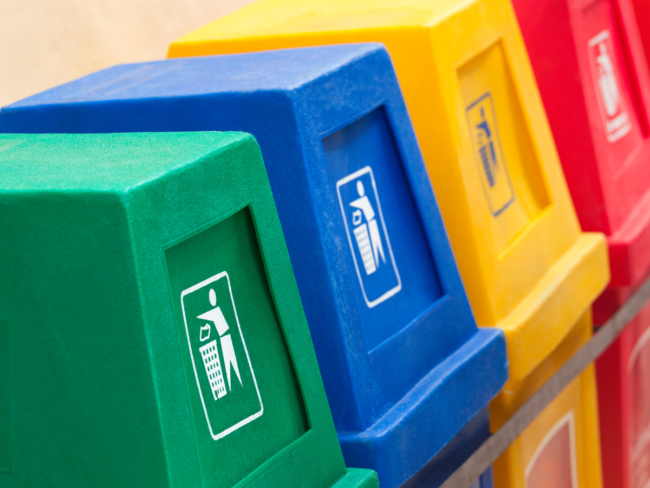
What are the Different Types of Waste Management?
Waste is an inevitable part of modern life, increasing significantly since industrialisation. Both households and businesses face the challenge of managing waste effectively. In Australia, waste production reached 75.8 million tonnes between 2018 and 2019, with manufacturing and construction leading the way, followed by electricity, gas, and water services.
The amount and the methods may change over the years, but the needs remain the same. Someone’s got to deal with the rubbish. In this blog, we’ll explore the proper management of waste, why it is still important, and a few methods to manage it.
What is a Waste Management?
Waste management is the process that involves the appropriate handling, collection, transportation, and disposal of various types of waste materials. Its goal is to minimise the environmental impact of waste while maximising resource efficiency.
Why invest in A Waste Management System?
Investing in a waste management system is crucial for several reasons:
- It maintains cleanliness and hygiene
- Reduces pollution
- Conserves resources
- It minimises health risks associated with improper waste disposal.
- Businesses can save money in the long run by implementing efficient waste management practices, as they can reduce waste generation and disposal costs.

8 Types Of Waste Management
1. Recovery And Recycling
Recycling is one of the greatest steps in waste management, reducing landfill waste by reusing materials. It’s a joint effort between manufacturers using recyclable materials and consumers sorting them.
Recycling reduces energy usage, landfill waste, air and water pollution, and greenhouse gas emissions while conserving natural resources.
2. Composting
Composting turns organic waste into nutrient-rich food for plants. Through natural biodegradation, microbes decompose materials over months, converting them into safe compost. It’s not just for food scraps; composting disposes of hazardous organic matter, like faeces, turning it into beneficial compost for plants.
3. Waste Minimisation
The most effective waste management strategy is waste minimisation. This involves opting for recyclable products, repairing items instead of replacing them, ditching plastic bags, and adopting sustainable buying habits. By considering a product’s entire lifecycle, you can significantly reduce waste generation.
4. Special Waste Disposal
Certain hazardous wastes require special disposal to prevent contamination. Examples include biomedical waste, asbestos, pesticides, and sludges. These wastes cannot be mixed with standard waste items and necessitate specialised disposal methods.
5. Landfill
Before the environmental impacts of consumerism and waste disposal were known, landfills became the method of choice for businesses and consumers worldwide. Collecting waste to throw in landfills is the easiest form of waste management. However, it’s the most environmentally destructive, and it’s unlikely anyone will get away with this as a single option for much longer.
6. Incineration
Incineration involves burning solid waste at high temperatures to reduce volume. However, this method contributes to greenhouse gas emissions and produces residues. While effective in waste volume reduction, it falls short of addressing environmental impacts.
7. Plasma Gasification
Plasma gasification uses high-temperature plasma torches to convert solid waste into ionised gas. This process produces syngas while disposing of waste, offering a renewable energy source. Although not widely adopted in Australia, it holds promise for efficient waste disposal and energy generation.
8. Waste To Energy (Wte)
Waste-to-energy encompasses solutions that generate heat, electricity, or fuel from waste. This includes methods like plasma generation, which converts non-recyclable waste into useful energy forms. WtE offers a diverse range of technologies aimed at sustainable waste management and energy production.
The 5Rs:
The 5Rs—Reduce, Reuse, Recycle, Recover, and Residual Management—are guiding principles for sustainable waste management:

How can I implement a Waste management plan?
Implementing a plan involves several steps, but when done correctly, it can help to improve the proper disposal of waste. Here’s a quick step-by-step:
- Assessment: Conduct a detailed site analysis of your waste generation sources, types of waste produced, and current waste management practices.
- Set Goals: Set clear goals and objectives for your waste management plan, such as reducing waste generation, increasing recycling rates, or improving waste diversion.
- Develop Strategies: Identify and implement strategies to achieve your waste management goals, such as implementing recycling programs, reducing packaging waste, or investing in waste reduction technologies.
- Training and Education: Provide training and education to employees and stakeholders on proper waste management practices, including segregation, recycling, and disposal.
- Monitoring and Evaluation: Regularly monitor and evaluate your plan to track progress, identify areas for improvement, and make necessary adjustments.

Conclusion
Effective waste management is essential for a healthy environment and conserving valuable resources. By investing in waste management systems and implementing sustainable practices, businesses can minimise their environmental footprint and contribute to a more sustainable future.
Since 1976, Elephants Foot has played a crucial role in Australia’s waste and recycling industry. We have been at the forefront, helping to support businesses with their waste management solutions according to their changing values and increasing awareness of environmental impacts.
Elephant’s Foot is a holistic waste management partner for Australian businesses, offering chute solutions, consulting services, equipment services, and care solutions. Contact us today to discuss how we can design a waste management solution to meet your needs.
